M57
- The Ring nebula - How to get a photograph
Yes, I know, that the result image is not
very nice (conditions were very poor), but I think it can
be instructive to know how to get the picture. The main
failure of this example is small amount of frames. But it
was only the first ligth of camera for testing purposes.
All processing was done by means of K3CCDTools software,
postprocessing was done in Corel PhotoPaint.
1, Taking frames.
At first I took 9 frames exposured 5s with gain
75%. These frames are called raw frames. Here is
the best one of them.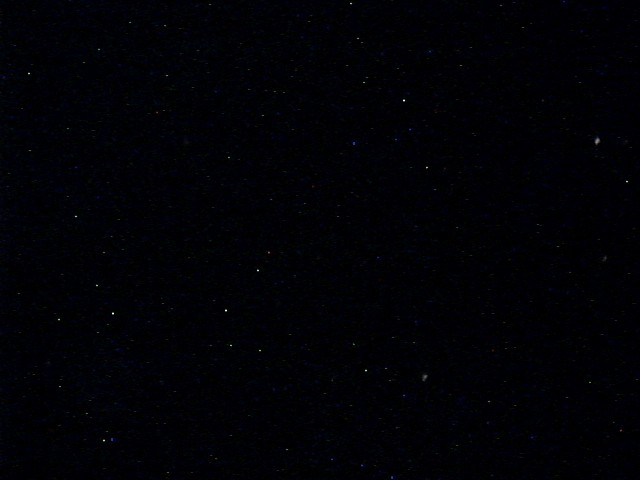
As you can see, it is very hards to recognize the
stars from hot pixels. That's why the finding the
deep sky object is very difficult. |
2. Dark frames.
Then I captured 4 dark frames (taken with the
same settings as images above, but with shrouded
camera). Then I stacked dark frames and created
averaged dark frame (DF). The stacking is used to
eliminate camera noise (but for real use it
better to use much more frames than 4). Here
there is the result dark frame:
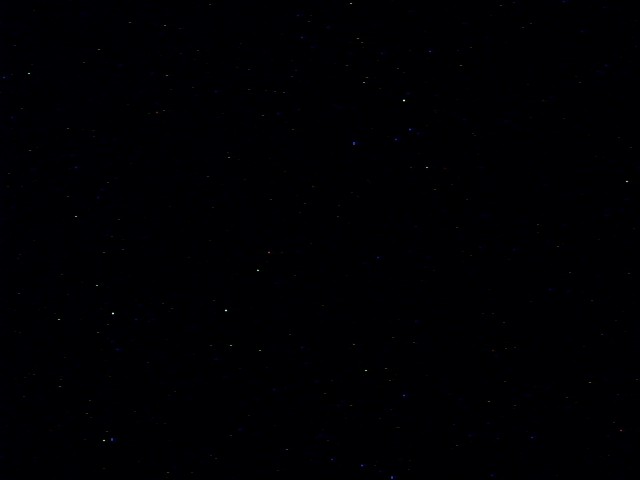 |
3. One turning to
telescope mount accuracy.
As my telescope mount is only
entry level of mounts, it is impossible to do
longer exposures without tracking. Because I have
no solution for tracking now, I decided to do
short 5s exposures of M57.
The effect of tracking inaccuracy is is visible,
when we simply stack the frames (DF was applied):
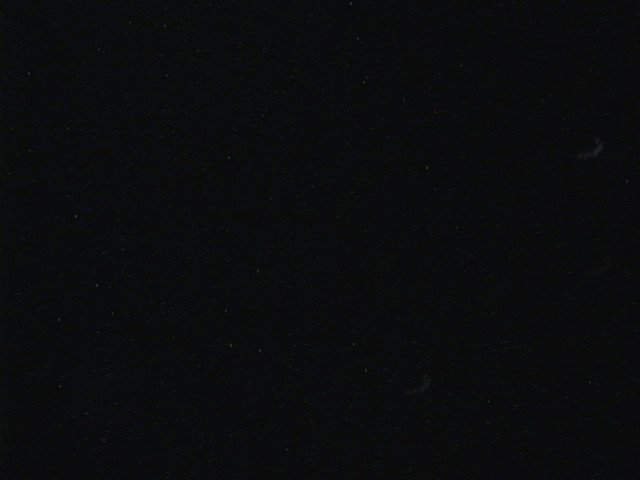
Applying dark frames reduced hot pixels. But
inaccuracy of telescope mount caused, that the
stars are blurred and darker. The effect of
inaccuracy of mount is better visible after
applying histogram function:
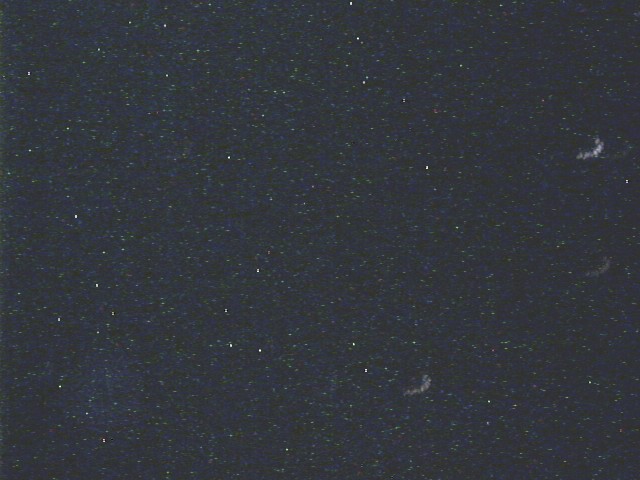
Now the picture is more clear. You can see the
residues of hot pixels. It is caused by small
number of used frames for stacking and for
calculating average dark frame. The arc shape of
stars is now apparently visible. The shape of arc
shows, that the tracking error is not caused only
by bad polar alignment, but also by slackness of
mount (bearings, axles...). The faint fuzzy in
the bottom left corner suggest the Ring nebula.
|
4. Now there is a time
for processing.
At first we must exclude the bad frames (blurry
stars, etc.) The tracking error can be eliminated
by aligning individual frames according to stars.
Because of presence of hot pixels the whole job
must be done manually in K3CCDTools. Here is the
result of stacking aligned frames with applying
DF and histogram function:
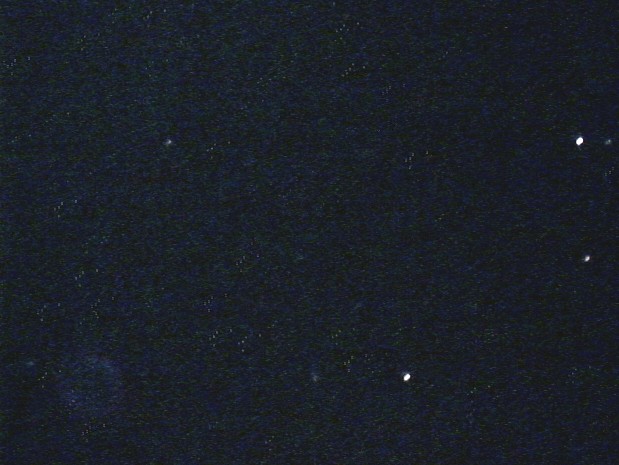
The hot pixels are darker now. It is caused by
aligning (at least one advantage of bad tracking
:-)). Stars are now better visible and the Ring
nebula is now more apparent.
|
5.
The post processing.
The final image must be processed by specialized
graphics software (MaximDL, Corel PhotoPaint,
Adobe PhotoShop, PaintShop Pro, ...). They have a
lot of useful filters for post processing.
Usually I use Corel PhotoPaint. The residues of
hot pixels I reduced by applying filter for
removing dust and scratches from scanned images.
After that I resized the image to 50% reduce
noise and applied some level equalization
functions. The amount of various functions and
their settings is practically unlimited, so there
a lot of space for playing with picture. Here are
two of my various results:
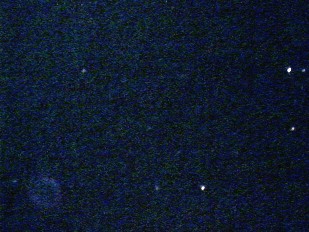 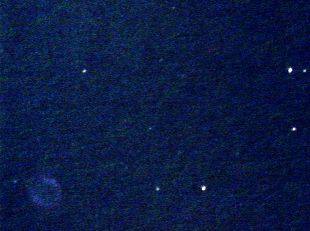 |
Back to M57
Computer generated images,
real images, drawings and texts are property of the
author and may not be reproduced or used without
permission of author.

Last Update: 8.10.2001
|